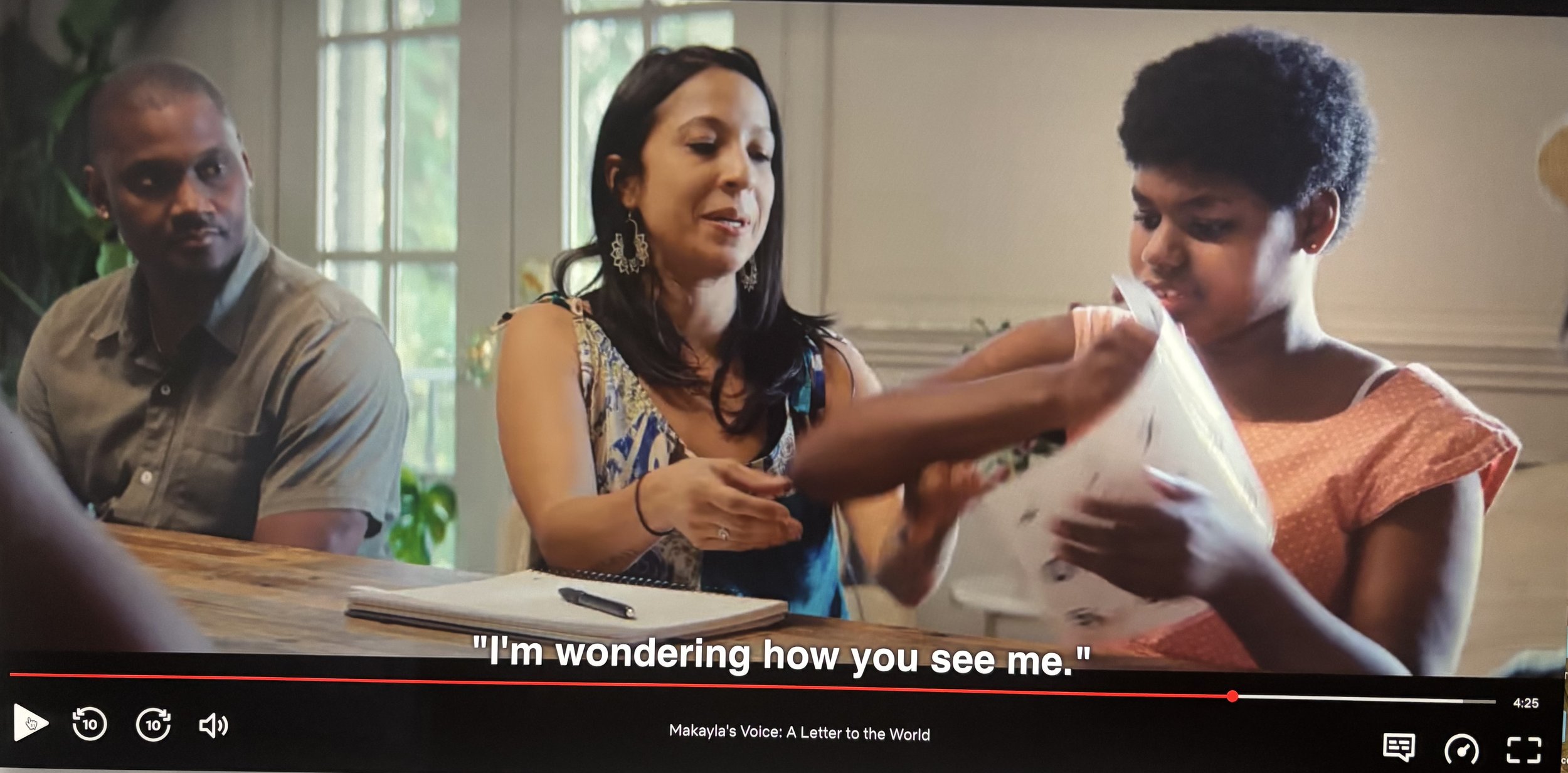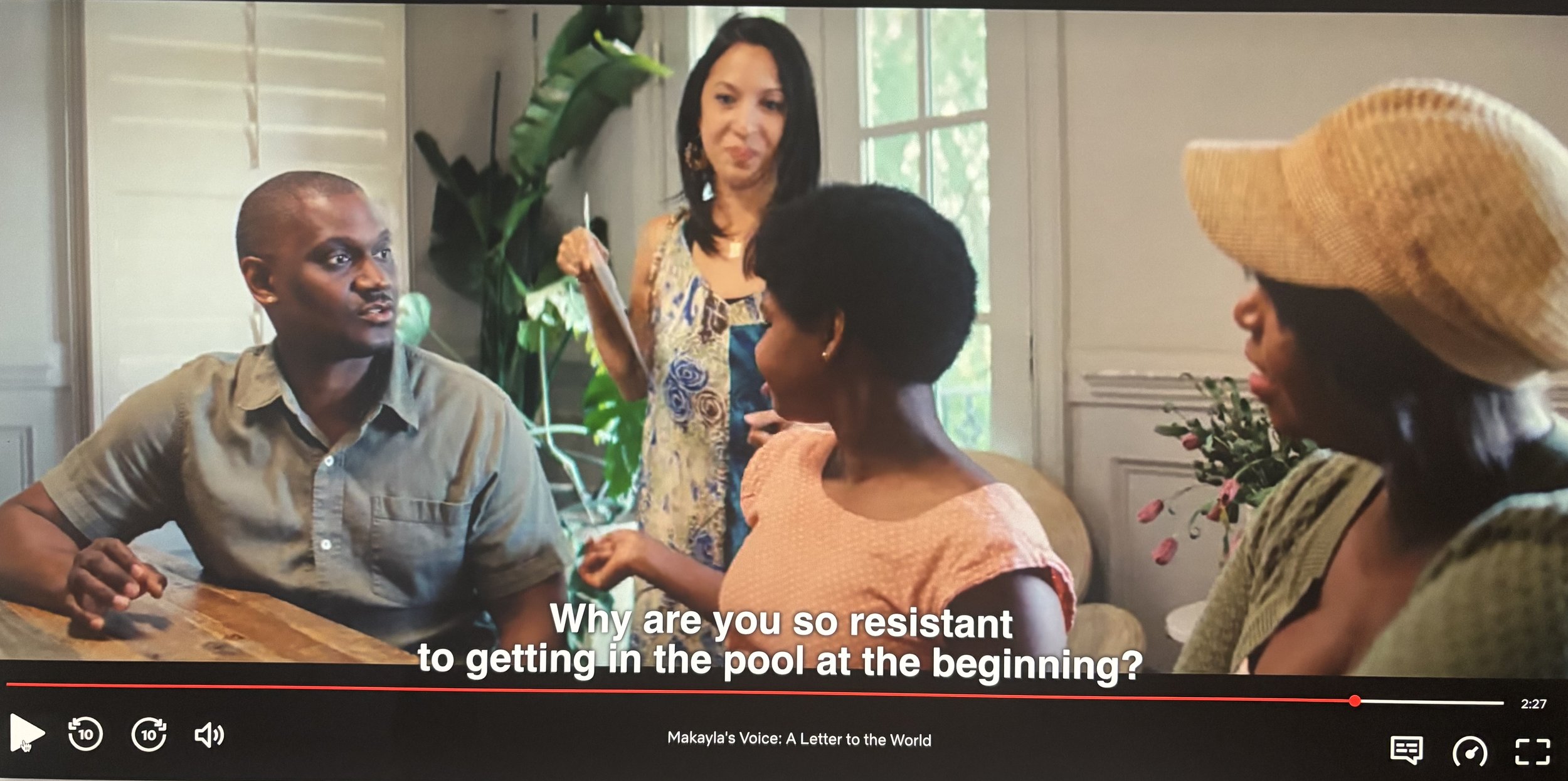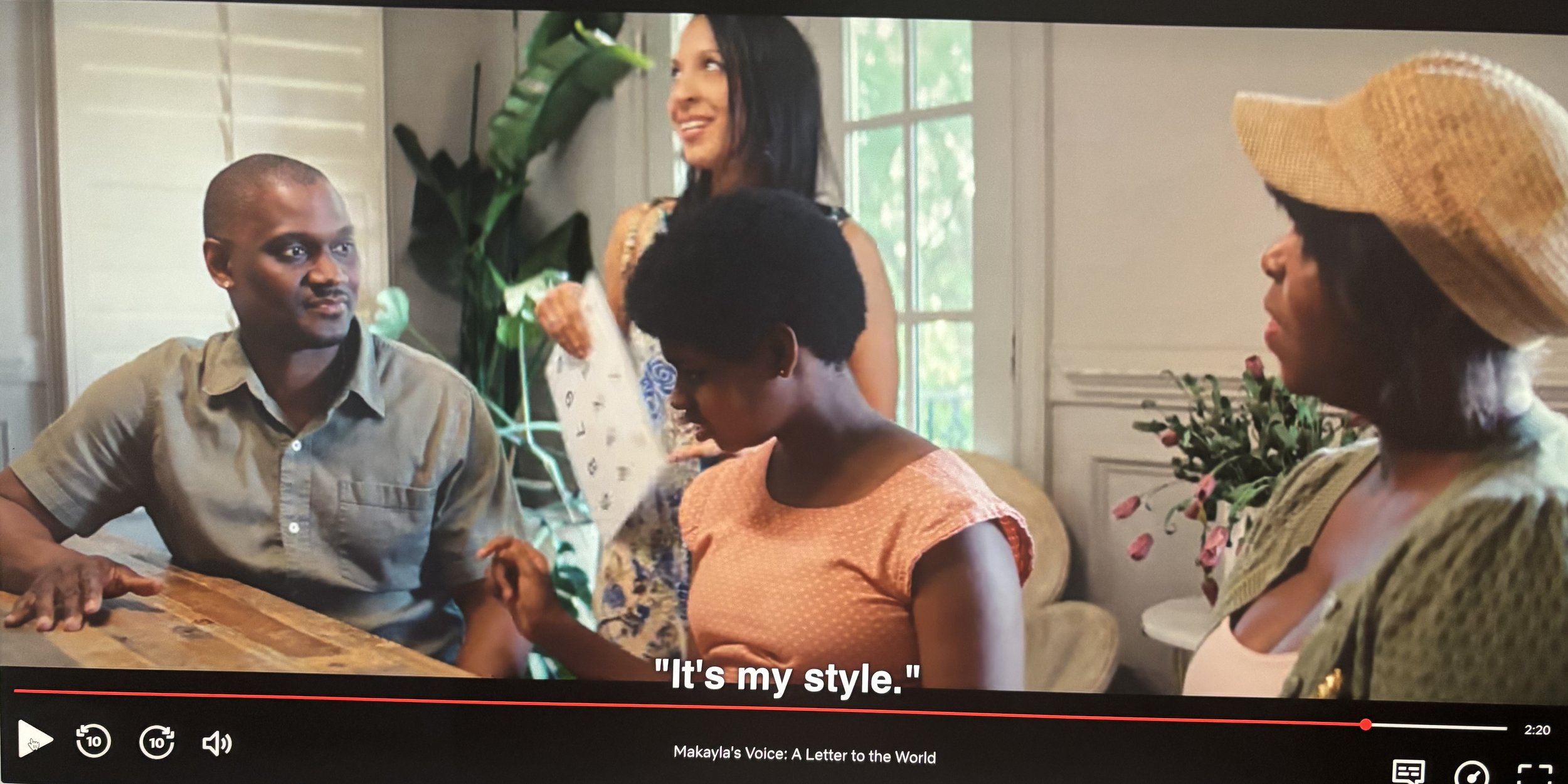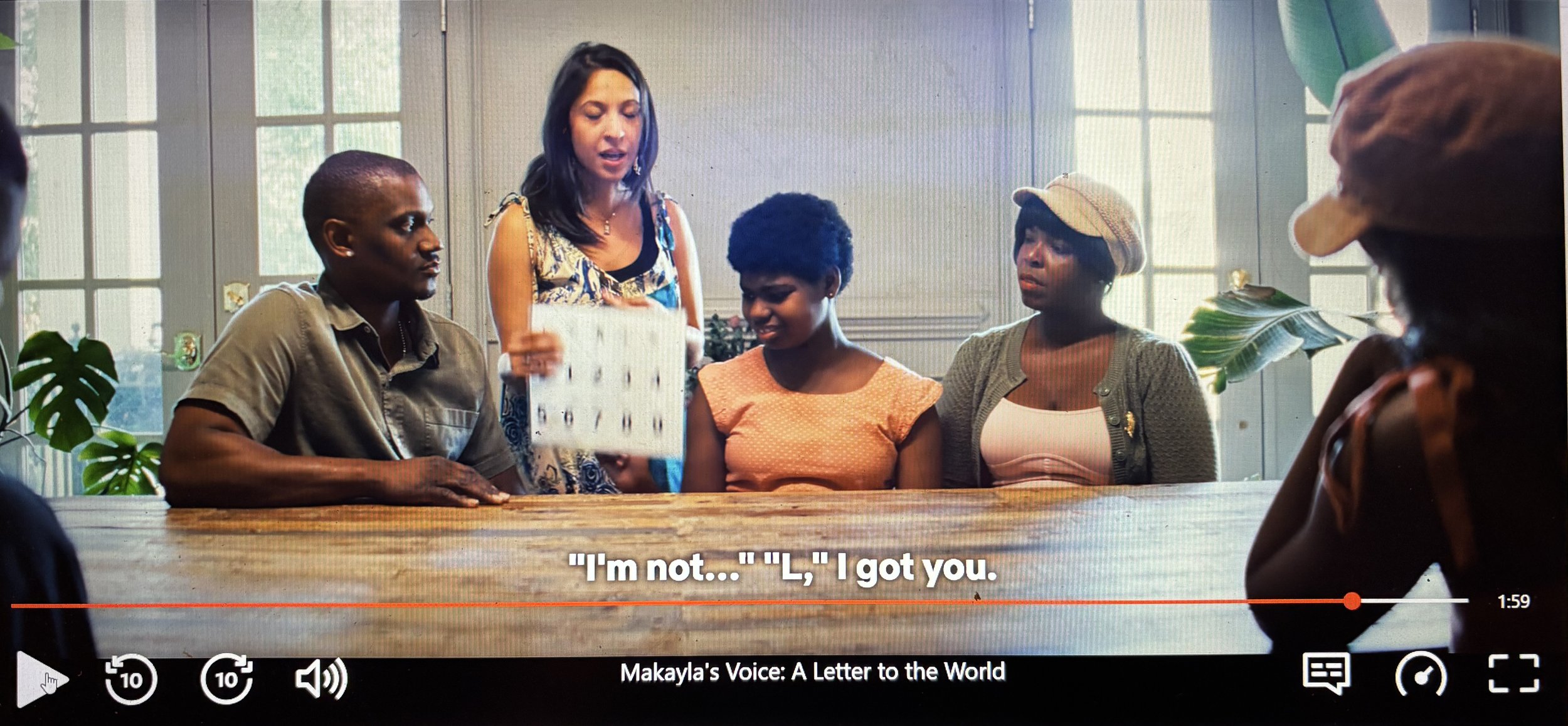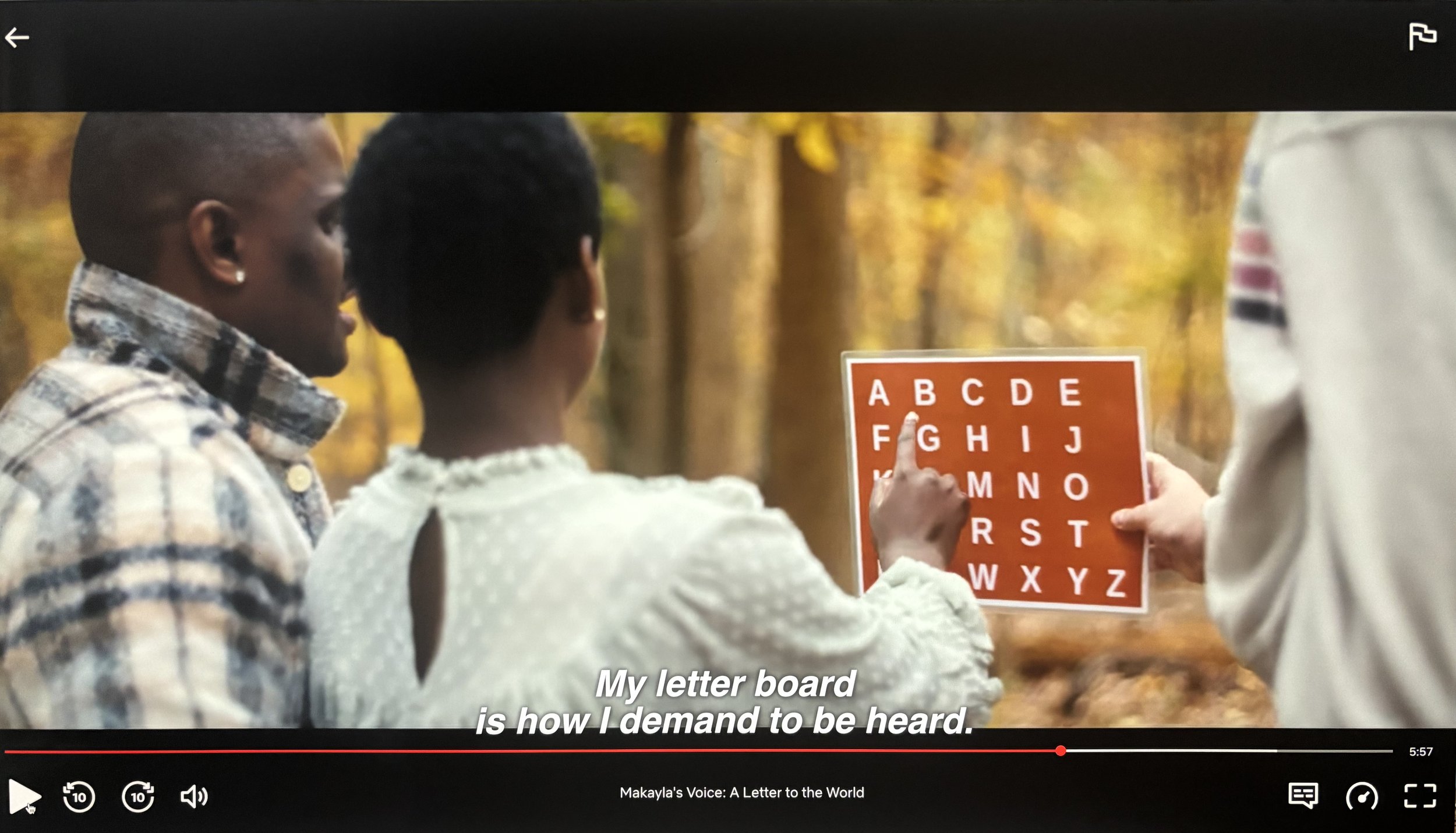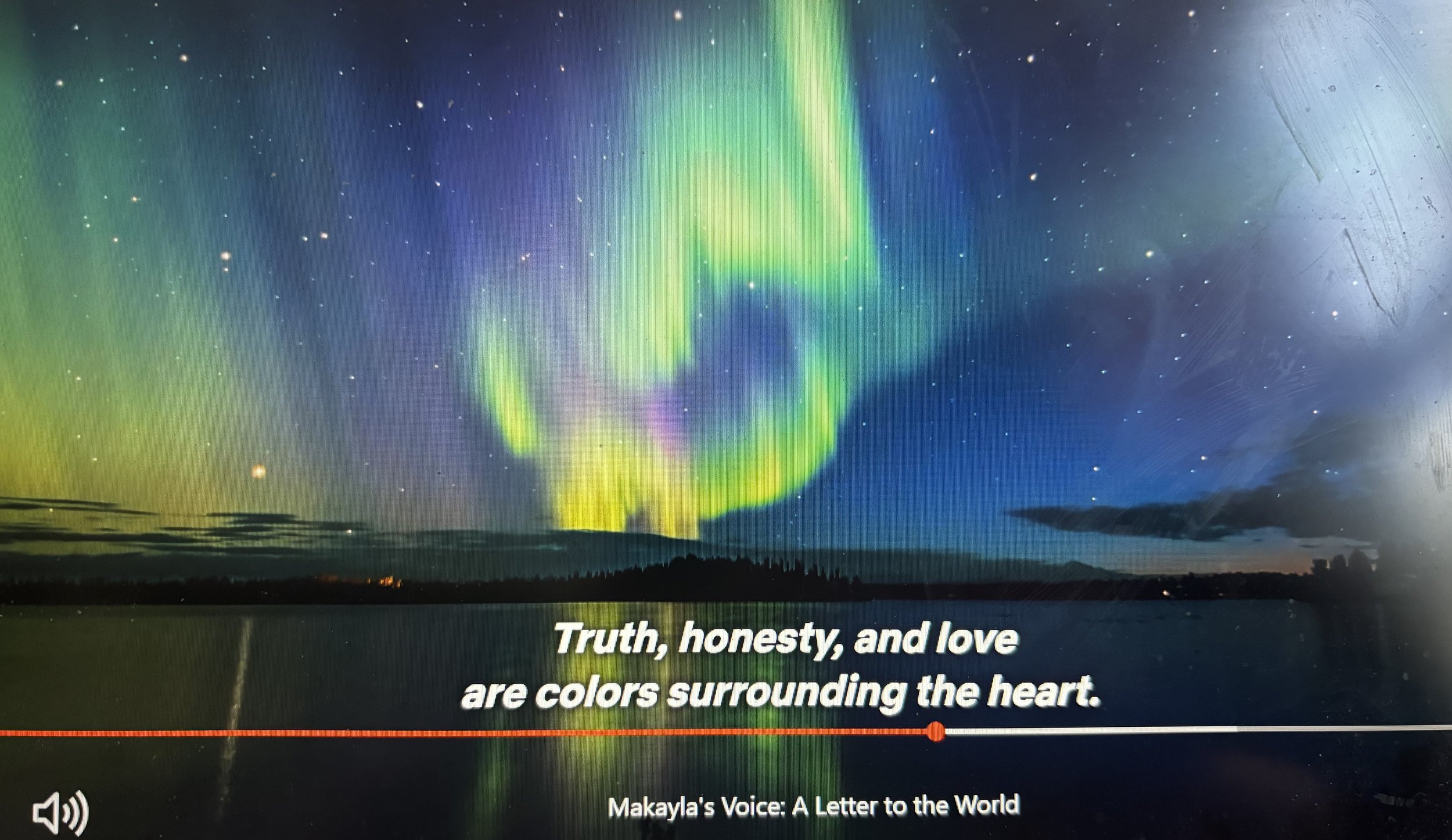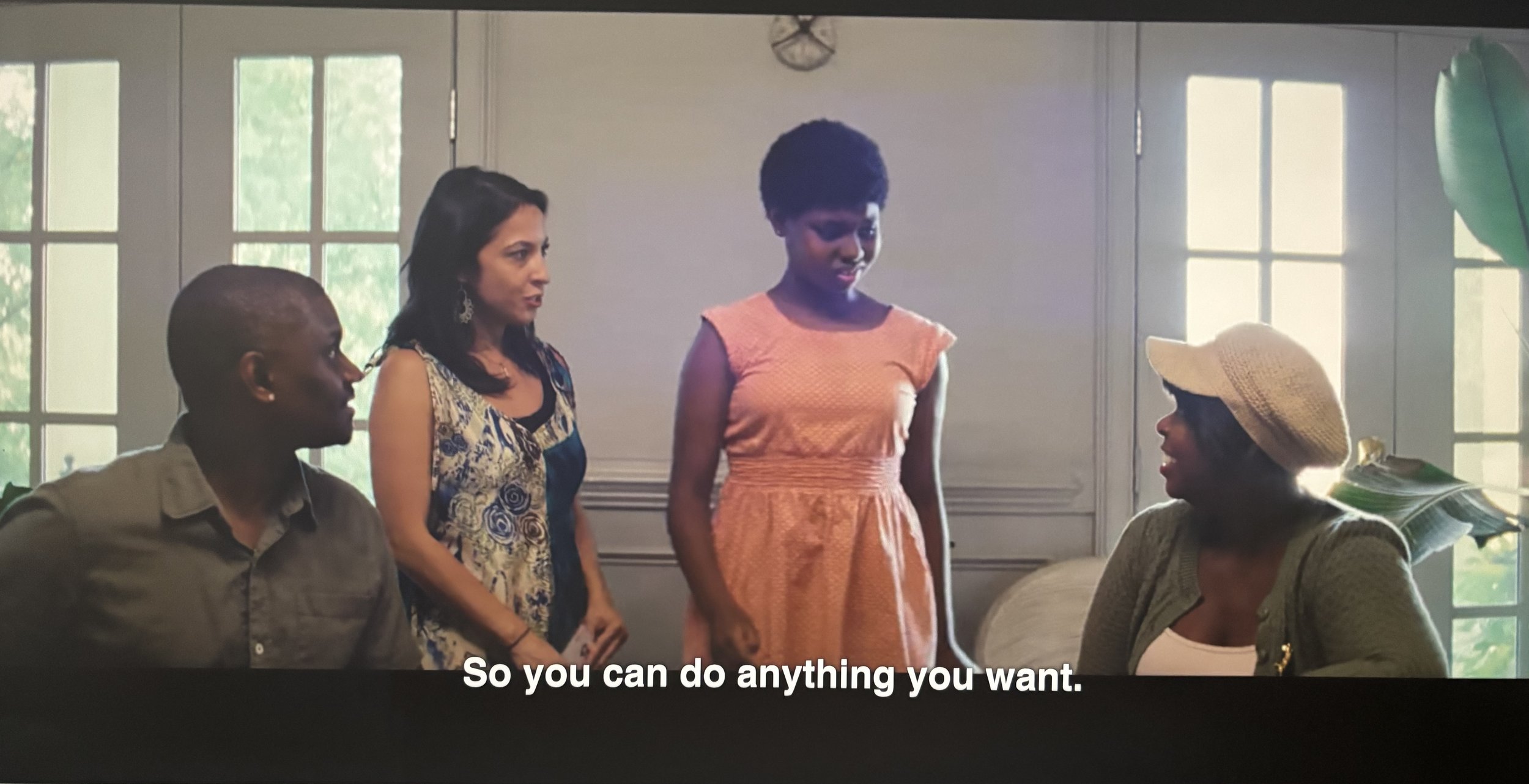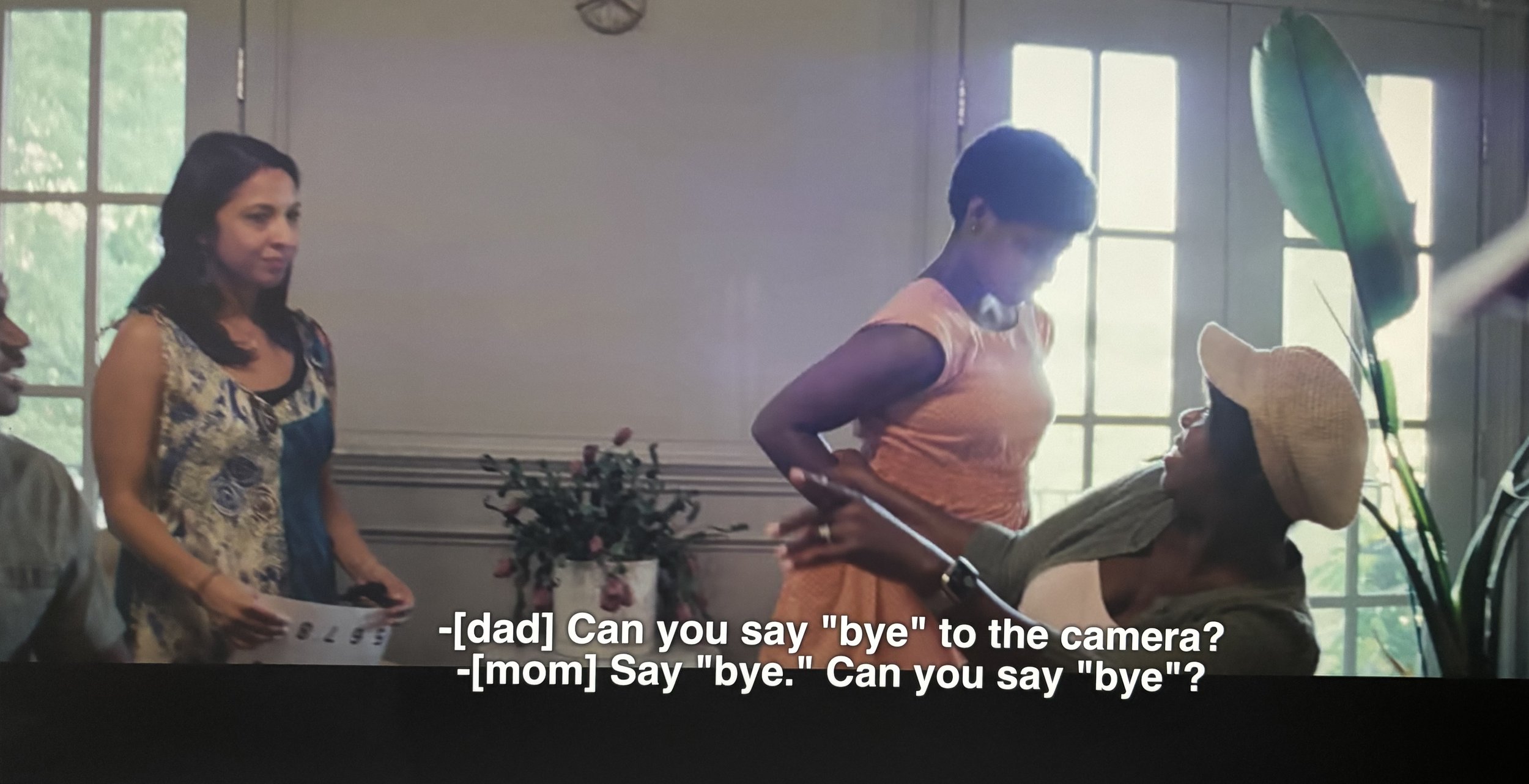Why is a podcast on telepathy doubling as an infomercial for facilitated communication? I’ve just finished listening to and then reading transcripts of all 10 episodes of the first season of the Telepathy Tapes podcast, and I think I have the answer. You can’t have telepathy without FC and you can’t have FC without telepathy. This co-dependence works as follows.
First, the only instances of purported telepathy that the podcast has been able to come up with are instances involving FC: instances, that is, in which the purportedly telepathic messages are channeled through facilitated communication. Every single purportedly telepathic individual on the podcast is a non-speaker with autism who only communicates through facilitated communication; in particular, through Rapid Prompting Method (RPM) and, especially, Spelling to Communicate (S2C). This even includes an individual who is described as being “completely blind” and yet still able to spell messages on a letterboard. There are, in other words, no telepathic individuals who channel the telepathy through speech, sign language, Morse code, semaphores, or, even, ordinary ten-finger typing—not on the Telepathy Tapes, and, I’d venture to add, nowhere else on planet Earth.
Second, all the available evidence on planet Earth strongly indicates that the messages generated from non-speaking individuals with autism through RPM and S2C are authored, not intentionally by the individuals with autism, but unwittingly by their facilitators. This makes it inevitable that, every so often, facilitators will notice they’ve facilitated messages that express their own private thoughts or other information that their client couldn’t possibly know. And since most of the thousands of facilitators who stay in the business long term (parents included) are convinced that they aren’t influencing their clients’ letter selections, at least some of them will decide that it’s more plausible, when their own private thoughts and knowledge leak out onto the letterboard, that their clients are telepathic.
In short, the co-dependence between FC and telepathy stems from the fact that (1) it’s extremely hard to find examples of seemingly convincing telepathy that don’t involve FC, and (2) that most facilitators and family members would much rather believe that clear instances of facilitator control over messages are the results, not of prompts and cues from the facilitator, but of telepathy.
Put another way, for those of us who know about Ouija board effects, nonconscious muscle movements, Clever Hans, and the empirical studies of facilitated communication dating back to the 1990s, the Telepathy Tapes podcast offers a treasure trove of examples of facilitator control over messages. For those who want to believe in FC, RPM, and S2C, it instead offers a treasure trove of examples of telepathy.
That is, one person’s evidence against FC/RPM/S2C is another person’s evidence for telepathy.
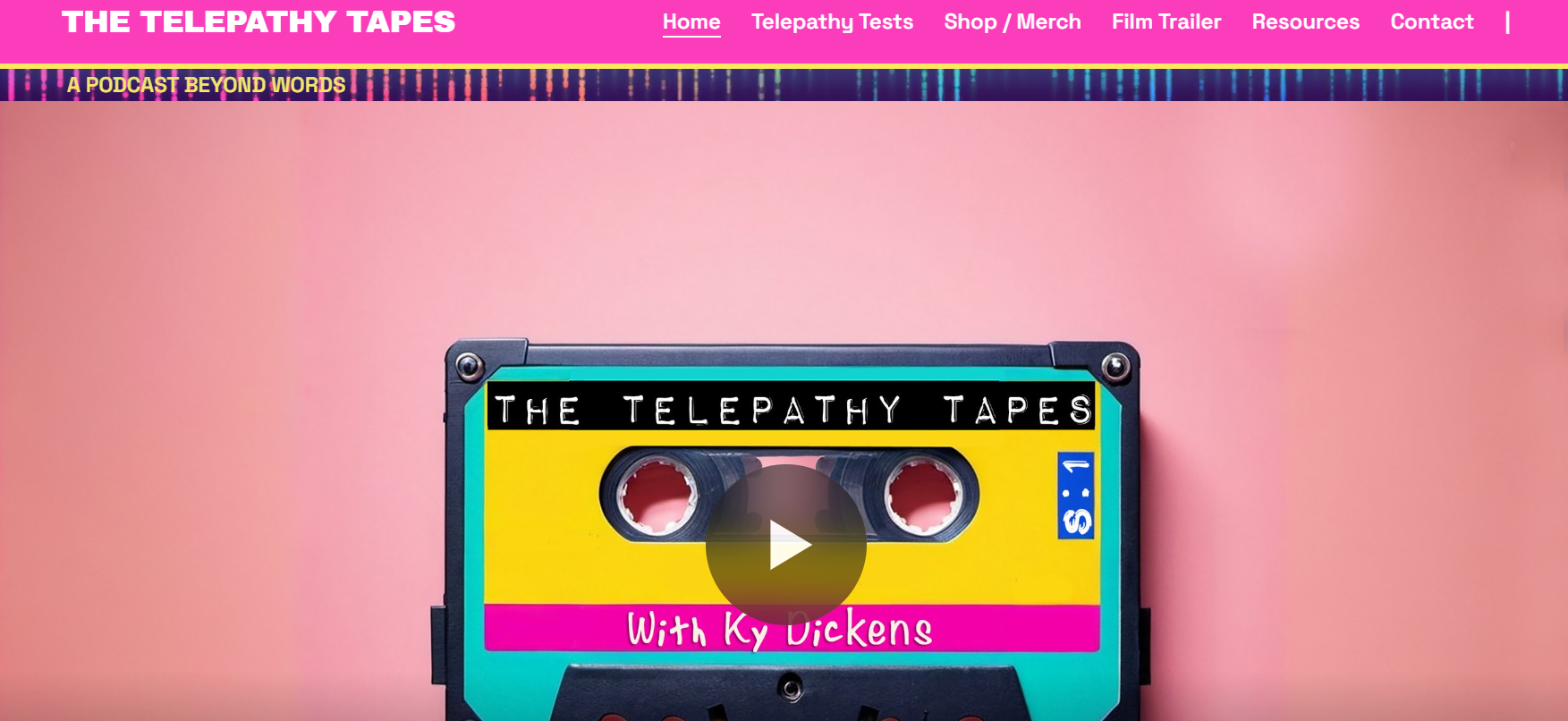
As an infomercial for facilitated communication, the Telepathy Tapes podcast makes all the usual claims about FC and autism, dishing out large servings of pro-S2C advocacy. It also makes additional claims about autism that provide additional, indirect support for both FC and telepathy—claims about savant skills and truthfulness that haven’t come up in previous material we’ve discussed on this blog. Before I get to these, here’s a quick recap of the usual pro-FC claims and advocacy statements that have made their way onto the Telepathy Tapes.
First, host Ky Dickens and her collaborators, like all FC-promoters, are convinced that there’s no cueing going on between the facilitators and the autistic non-speakers. In Episode 2, one of Dickens’ collaborators insists, in reference to one of show’s telepathy “experiments,” that the facilitator’s finger is “just on her head. It’s not moving.” In Episode 3, Dickens assures us that another mother “holds the letter board perfectly still” while her non-speaking son points to letters. In Episode 8, Dickens states:
The accusation that most spellers are not actually communicating, that someone is pushing their hand around or moving around the letterboard, is unabashedly, unequivocally false. I have filmed dozens of spellers, and I have never witnessed such a thing. You can watch the clips of the spellers you've met at the telepathytapes.com.
We and others have watched these clips, and we have found evidence of subtle facilitator cueing throughout. See, for example, Janyce’s analysis here and Stuart Vyse’s analysis here.
Dickens goes on to state:
I also recommend The Spellers Movie, which you can watch for free on YouTube. It follows many incredible spellers who are communicating independently.
In fact, none of the individuals in The Spellers movie, which we reviewed here, are able to communicate spontaneous messages without their facilitator within auditory or visual cueing range. And, indeed, Dickens herself acknowledges as much about the spellers she’s met:
If the skeptic were to test a speller, which they have, they might find it surprising or even disqualifying that a trusted partner's presence must be in the room. And it helps them to communicate. Even if they're not being touched at all, even if this partner is 10 feet away, just having them there is necessary.
The only type of possible facilitator influence acknowledged by Dickens et al. isn’t the behavioral influence on FC-ed output of facilitator muscle movements, verbal prompts, and other cues, but the telepathic influence on FC-ed output of facilitator thoughts. Referring to it as a “telepathic link”, Dickens states:
The people who I've interviewed for this project, however, are aware of it, and do a lot of creative things to make sure the non-speakers are typing only their own thoughts.
But let’s return to the podcast’s FC advocacy. Besides assuring us that there’s no facilitator cueing, Dickens et al. also repeat the pro-FC talking points about why we should presume competence and not question non-speakers’ abilities. She berates people for assuming that “because a child can't talk, or has a difficult time controlling their body, that they're not competent.” She and others repeatedly assure us that these kids, despite what their bodies can’t do, are wise and gifted. She tells us that she’s “heard from scores of parents and teachers that spellers need to be believed and trusted to allow their gifts to shine.” One of the non-speakers is reported as having written in her diary “that she can read everybody’s mind but you have to believe in her for her to do it.” Many parents, Dickens tell us, are discovering that “if you believe and trust in your child, in their abilities and enable them to spell, you won't be disappointed.” She doesn’t mention that assuming that people are competent, while a good tactic for warding off authorship tests, is a poor tactic for ensuring that people actually become competent.
Dickens also repeats the usual, pro-FC justification for why non-speakers can only communicate by slowly pointing to letters on held-up letterboards: namely, that pointing to letters involves gross motor skills and thereby bypasses the purported challenges non-speakers have with fine motor skills. She doesn’t mention that pointing to letters is actually a fine-motor skill. Second, she and others claim that sometimes non-speakers require physical touch in order to regulate their bodies and locate their hands and fingers in order to type. She doesn’t mention that touch opens up additional opportunities for facilitator cues about which letters to touch. Third, she explains that “motor planning issues” cause the pointing to be slow. She doesn’t mention that slow, single-finger letter pointing is also much easier to cue than ten-finger typing (or speech, or sign language, or Morse code, or semaphores). Nor does she mention that slow letter selection reflects the uncertainty about what letter to type next that comes from not knowing what message you’re typing and waiting for a cue from the person who does know the message.
Dickens and her participants also repeat the usual, pro-FC justification for why non-speakers are more competent than they appear and urgently need to be unlocked through FC: namely, that purported mind-body disconnect that’s been around almost as long as FC has and still has no evidence backing it up. One facilitated message, for example, conveys that the non-speaker “didn’t realize he had a body” and later, when his mother helped him feel his body by touching him, “Oh, I have a body, but the body in my mind doesn’t move.” An S2C practicing speech pathologist states:
We know that autistics have difficulty knowing where their body is in space. I've had kids who told me they don't feel their hands. They don't feel their arms.
We also learn how this mind-body disconnect has caused people to deny non-speakers an education. As Dickens tells us, “if you have a hard time coordinating motor function and regulating your body, testing behavior is not a good way to test intelligence.” Worse, we hear repeatedly how this mind-body disconnect has caused non-speakers to feel trapped inside their bodies, which are alternately described as “uncooperative,” “unruly,” and “betraying” them. Worse still, we hear how this mind-body disconnect has led to an epidemic of loneliness among non-speakers. As the infomercial revs up in the final episodes, we learn that “spelling” on letterboards is the solution to all of this. As Dickens puts it:
There is an epidemic of loneliness plaguing so many non-speakers. I've observed different extremes of this isolation. But the most unbearable is for those who never learned to communicate via spelling, who are trapped inside their own bodies, unable to share their thoughts, personalities or intelligence with the world.
Given this:
I wish[] a wise adult could just drop into the hill [the place where the purportedly telepathic, autistic non-speakers purportedly meet up at night], make a list of all the people that need help and then find a way to get all those people on letter boards.
These statements highlight a baffling contradiction in a podcast that simultaneously tries to demonstrate that telepathy is real and to promote facilitated communication: if non-speakers are telepathic, and therefore can communicate with one another telepathically (as many showcased here purportedly do), how is there an epidemic of loneliness that can only be resolved through RPM/S2C? All Dickens has to say is:
So yes, telepathy may be the best way to open up this incredible group of people so that they can share all that they know and have access to. But until society catches up with them, spelling to communicate will still be critical.
By episode 10, Dickens sometimes sets telepathy aside completely to urge all concerned listeners to become S2C practitioners:
To listeners who want to get more deeply involved, you can look into getting trained in spelling to communicate or the rapid prompting method, because to meet the spellers where they're at, more people need to be trained and willing to work with them on the board.
Nowhere else have I heard such vehement pro-FC advocacy.
But now let’s move past the FC infomercial aspects of the podcast and turn, as promised, to some additional claims about autism that provide indirect support for both FC and telepathy.
First, there are claims about savant skills. An interest in autistic savant skills was what purportedly led the podcast’s main “expert,” Dianne Henacy Powell, to the belief that non-speaking autistic individuals are telepathic. Powell is a psychiatrist and the author of the 2008 book The ESP Enigma: The Scientific Case for Psychic Phenomena. While I haven’t read the book and therefore have no idea what kind of “scientific case” Powell makes, I do know, from an online Google Scholar search, that she has published no peer-reviewed research that indicates that non-speakers are telepathic. But Powell has apparently spent time with autistic savants, and based on what she observed, she has decided that savant skills are more likely the product of telepathy than of brain power. As she puts it on the Telepathy Tapes podcast: “Savant syndrome is when someone is able to do something that knows something that is not explainable by the traditional ways of acquiring knowledge.” In Episode 4, she and Dickens elaborate:
Powell: Savant syndrome really stood out to me because it can’t be explained by the materialist model [of the brain] that we have in mainstream medicine.
Dickens: But savant syndrome challenges this because how can you be great at calculus or piano or various languages if you haven’t been taught them
Dickens: And this is how everything ties back to telepathy.
Powell: When I thought about savant syndrome, I thought that is so similar to what we call ESP or extrasensory perception
Dickens: Because ESP means you know things you haven’t been taught via your five traditional senses.
In fact, it isn’t necessary to invoke any mysterious psychic processes to explain the specific savant skills/types that Powell lists: “calendar calculation, mathematical savant, musical savant, foreign language/hyperlexia, prime number generation.” These skills, which correlate with the “restrictive interests” that define autism, are readily explainable by a combination of precocious development in specific areas; rote memorization skills; eidetic (“photographic”) memory; fixations or obsessions with letters, numbers, and/or calendars; perfect pitch; detail focus; and/or an ear for languages. Dickens, for her part, seems unaware that it’s entirely possible to teach yourself calculus (assuming you’re mathematically inclined), piano (assuming you’re musically inclined), and other languages. What would be miraculous is learning calculus without any math texts (or within the space of a day, as J.B. Handley’s facilitated son is alleged to have done), or learning another language without any text-based or auditory input. But there is also no evidence that anyone—autistic or not—has actually accomplished these things. Meanwhile, peer-reviewed research finds no reported savant skills that rise to anywhere near this level of miraculousness (see Park et al., 2023), and the cognitive processes for specific savant skills (e.g., calendrics) have been successfully modeled (see Heavey et al., 2012).
Powell’s most compelling case for telepathy-based savantism is a boy named Ramses Sanguino. Ramses, Powell claims, “was able to read eight different languages at the age of two.” But I watched a few videos of this boy, and what I saw was a combination of precocious hyperlexia vis a vis Chinese characters and Japanese hiragana (a recognition of the symbols and an ability to read them out loud); a precocious ability to recite specific sentences in Chinese and a couple of other languages; and a curious dysfluency with spontaneous spoken English. There is no need to invoke telepathy for any of this.
Another claim has to do with truthfulness. It is repeatedly suggested, throughout the podcast, that individuals with autism are incapable of lying, or at least find it really difficult to do so. If true, this claim might allay suspicions on the part of some listeners that some of the more fantastical messages facilitated out of the non-speakers—for example that they tele-travel at night to mystical realms where they meet up or imbibe wisdom from rabbis and other sages—might be, shall we say, a tad unreliable.
While there is some evidence that autistic individuals lie less often and with less sophistication than the rest of us do (see Bagnall et al., 2022), there’s no evidence that autistic individuals can’t lie. Anecdotally, consider Temple Grandin, who looked her teacher “straight in the eye” and lied to her about ruining her garden (Grandin, 1986, p. 37). Or consider John Elder Robison, who regularly embellished the academic knowledge he imparted to others with made-up factoids like the existence of a star named the “Cow Star”; who tricked his mother into thinking his younger brother had been kidnapped by a stranger; and who raised money for a prank on a teacher by soliciting donations for a made-up orphan’s relief fund (Robison, 2007; pp. 36-40).
Grandin and Robison might be considered to have Asperger’s Syndrome rather than autism, but lying extends to individuals with unequivocal autism. One mother reports that her moderately autistic son regularly impersonates other people on his cell phone; once presented her with a doctored report card that reported As and Bs instead of the Cs and Ds he’d actually earned; and, through an elaborate web of deception, got her permanently banned from Twitter. Another mother reports that her profoundly autistic, non-speaking son pretended to comply with a request to go to bed, shortly afterwards escaping out of his bedroom through a door on the other side.
All this is quite magical, in its own way. So are savant skills—the precocious reading and arithmetic, the foreign language skills, the ability to recreate elaborate songs on the piano that one has heard only once, or to recite hundreds of digits of Pi. Indeed, these skills are arguably far more magical coming from actual autistic brains than they would be if they were simply absorbed telepathically from some vague, amorphous source somewhere out there. Which takes us back to FC and all its associated illusions and lies—and how it, like telepathy, removes us all from the humanity and magic that exists in all children, regardless of their communication skills, regardless of how profound their autism.
REFERENCES
Bagnall, R., Russell, A., Brosnan, M., & Maras, K. (2022). Deceptive behaviour in autism: A scoping review. Autism, 26(2), 293-307. https://doi.org/10.1177/13623613211057974
Heavey, L., Hermelin, B., Crane, L., & Pring, L. (2012), The structure of savant calendrical knowledge. Developmental Medicine & Child Neurology, 54: 507-513. https://doi.org/10.1111/j.1469-8749.2012.04250.x
Park H. O. (2023). Autism Spectrum Disorder and Savant Syndrome: A Systematic Literature Review. Soa--ch'ongsonyon chongsin uihak = Journal of child & adolescent psychiatry, 34(2), 76–92. https://doi.org/10.5765/jkacap.230003

